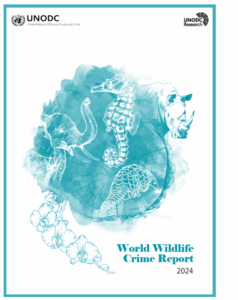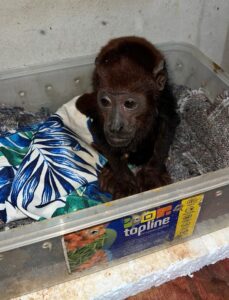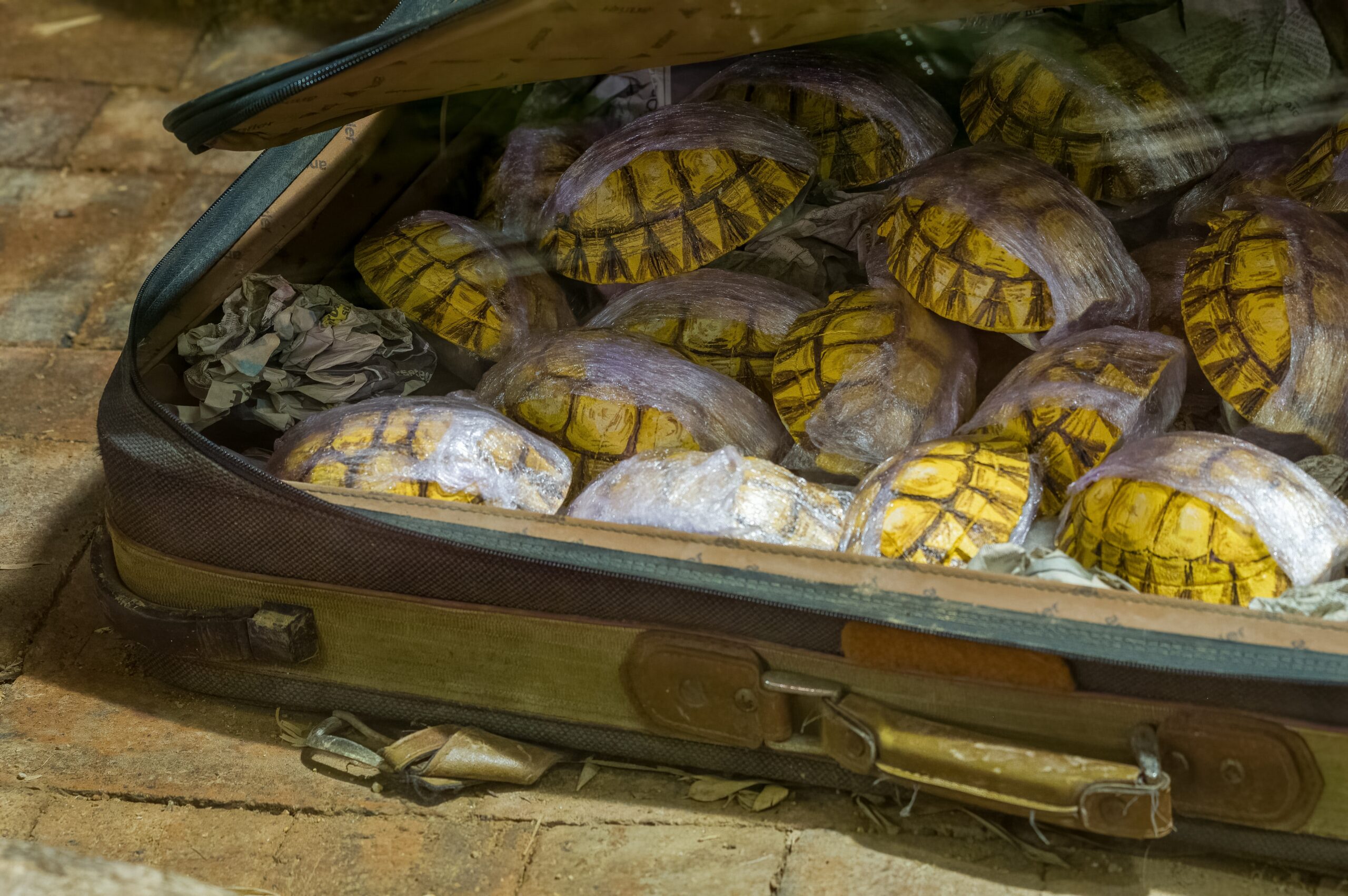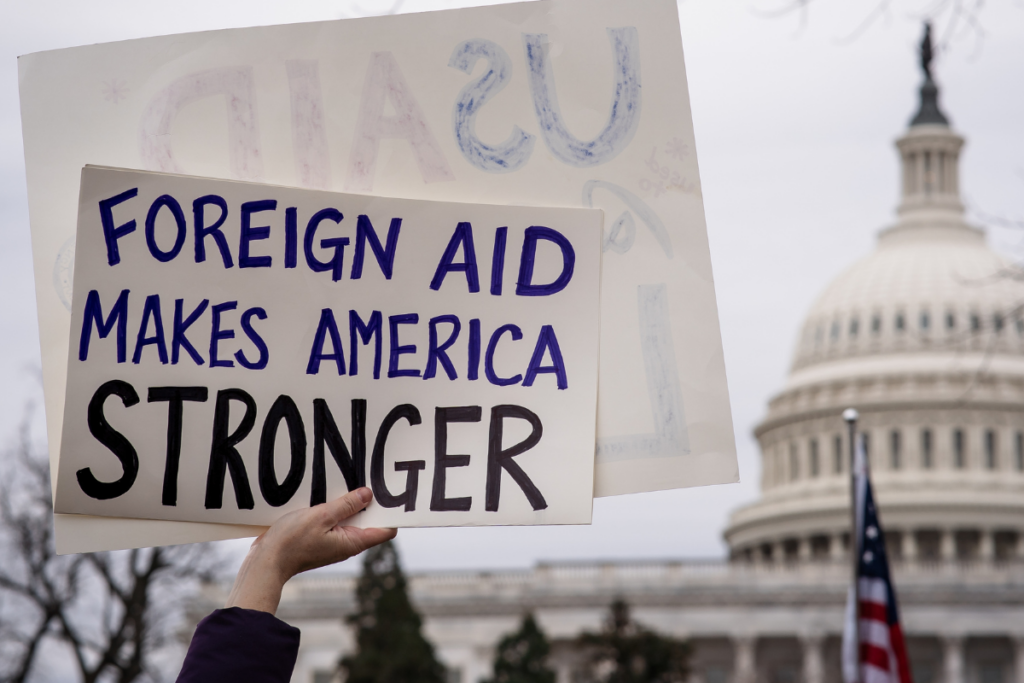On a sweltering July afternoon at Miami International Airport, TSA agents spotted an unusual bulge beneath a traveler’s shirt: two live turtles, duct-taped and squirming inside her underclothes. Her bizarre attempt to smuggle the rare species into the country made headlines — and the late-night comedy circuit. But behind the absurdity lies a booming black market. And it’s no laughing matter.
Now the world’s fourth-largest criminal enterprise, the illegal trade in wildlife has become a sophisticated, multi-billion-dollar industry that threatens biodiversity, fuels corruption, spreads disease and undermines global security.
And it’s happening right here at home.
Tigers sold on Facebook. Endangered parrots mailed by FedEx. In a recent case in Kentucky, investigators uncovered a scheme involving more than 600 reptiles, including venomous snakes, shipped from the U.S. to Europe through a trail of phony labels and forged paperwork.
But now, the U.S. is hitting back. In recent months, a coordinated counteroffensive has intensified — powered by bipartisan momentum, a 17-agency federal taskforce and support for the United Nations Office on Drugs and Crime (UNODC). Together, they’re taking on this $20 billion criminal operation.
A Global Threat with Local Consequences
Wildlife trafficking is far more than exotic pets, ivory trinkets or even conservation — it’s a matter of national and international security.
Criminal networks often move trafficked wildlife through the same smuggling routes and shell companies used for drugs, arms and human trafficking. According to UNODC, the illegal wildlife trade bankrolls organized crime and erodes governance. In parts of Africa rich in rare species, it also fuels violent insurgencies that both take advantage of porous borders and lax regulation, as well as fund the purchase of arms and military equipment. Worse still, unregulated wildlife markets increase the risk of zoonotic disease outbreaks and disrupt local ecosystems, especially when trafficked insects or reptiles are released into the wild.
A Domestic Crackdown Gains Momentum

This summer, authorities took bold steps to modernize the U.S. response, with a number of new regulations based on best practices from around the globe.
In Colorado, lawmakers closed a major loophole and passed the strictest bill in the nation that bans the sale and transport of species protected under U.S. and international endangered species lists. In Pennsylvania, a sweeping ivory crackdown across 18 counties led to landmark legislation for stronger enforcement.
At the federal level, the Department of Homeland Security launched a dedicated Wildlife Trafficking Unit. Its mission: follow the money, build complex criminal cases and dismantle international syndicates.
A Global Partnership, Years in the Making
But even the strongest domestic measures can’t confront wildlife trafficking alone. That’s where the United Nations comes in.

Operating in over 150 countries, UNODC’s Global Programme on Crimes that Affect the Environment is the world’s foremost platform for fighting wildlife crime at scale. And as the agency’s largest funder, U.S. backing helps UNODC support countries in modernizing laws, training prosecutors, strengthening border controls and building forensic labs that can actually hold traffickers accountable.
And the work is paying off.
Just last month, a coordinated operation with Peruvian law enforcement dubbed “Predators of the East,” dismantled a major trafficking network operating in the Amazon Basin. The bust led to 12 arrests, including five officials. Over 250 live animals were rescued and, tragically, 5,000 dead invertebrates were also seized. The operation was made possible by years of international cooperation in training, customs reform and the establishment of alternatives to poaching in vulnerable communities.
In Nigeria, UNODC programs are helping dismantle wildlife trade networks tied to insurgent groups. In Southeast Asia, UN-backed corruption probes are targeting trafficking cartels using illegal fishing boats and shipping routes to launder illicit wildlife.
American Leadership
The U.S. has long been a global leader in wildlife protection — starting in 1900 with the Lacey Act, the first federal law to criminalize wildlife trafficking. That law, still in force, inspired similar frameworks around the world and is regularly used to prosecute cross-border environmental crimes.
Later, in the 1970s, the U.S. helped shepherd creation of the Convention on International Trade in Endangered Species (CITES) — a multilateral treaty signed by 185 parties, administered by the UN and a standard-bearer in wildlife protection. CITES provides the global legal framework for regulating cross-border trade in over 40,000 endangered species.
And in 2016, the END Wildlife Trafficking Act brought a new era of interagency, bipartisan coordination and global cooperation.
But today’s threat is bigger, faster and more elusive than ever. From encrypted marketplaces to crypto payments, traffickers are evolving.
That’s why the U.S.-UN partnership is so critical.
Meeting the challenge requires continued investment in international partnerships, sophisticated enforcement tools and multilateral diplomacy — all of which amplify U.S. influence while protecting both ecosystems and national interests.
A New Chapter in Wildlife Protection
From turtles in Miami to ocelots in Iquitos, wildlife trafficking is a global heist — looting natural wealth, corroding institutions and endangering public health and security.
U.S.-UN action is finally putting traffickers on notice.




